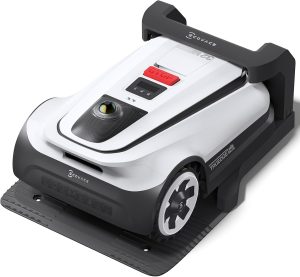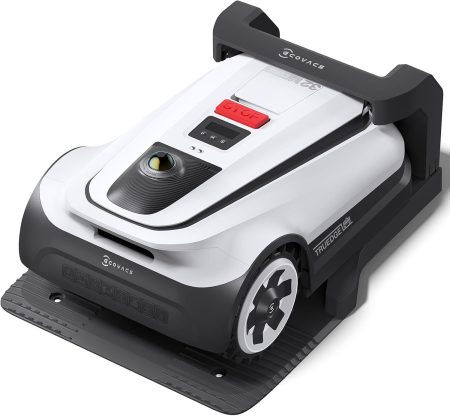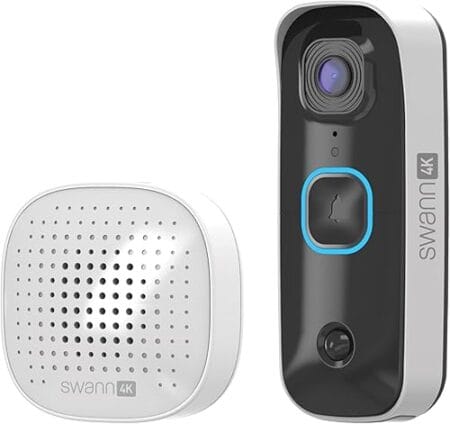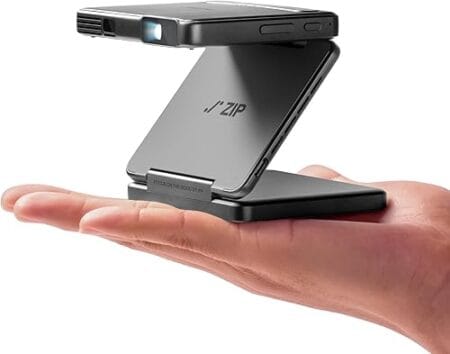Two pool robots are reviewed here, one of which is the best cleaning tool I’ve ever used, and the other of which is extremely complicated and frustrating. The twist is probably already obvious to you: the iGarden Pool Cleaner K60 is the same equipment.
Specifications
To begin, simply have a look at this: The machine resembles a sports car more than a glorified leaf sweeper because of its jet-black chassis and orange-trimmed wheels. Despite its striking appearance, it is nevertheless able to move thanks to its big wheels and treads, which are adjacent to two rotating scrubbers. It’s a rather typical, traditional design.
Its greatest selling feature is found inside: According to iGarden, the 30-pound robot can run for up to six hours on a very robust 7500mAh battery. (The best maximum functioning time I tested was approximately 6.5 hours.) A cursory check reveals that a prototype robot from the same manufacturer achieved the 40-hour milestone in 2023, which contradicts iGarden’s claim that it holds the Guinness World Record for robotic pool cleaning duration.
But notwithstanding, six hours is quite outstanding, and even more noteworthy is the fact that, in my years of testing these gadgets, no other robot has accomplished this feat: In my first synthetic leaf test, it completely cleared the material, leaving no debris behind, even on steps, which are difficult for most robots to clean effectively.
The iGarden swept up everything on its first run, which was a huge first because even the best pool robots occasionally leave behind some scraps. (It is still impressive that two or three tidbits were left behind by subsequent runs.)
Performance
What’s the catch, then? The first of many is that the iGarden K60 requires those six hours to complete all of that work. Although the machine may be programmed to run for shorter cleaning intervals (60, 90, or 120 minutes), even the 120-minute option only managed to remove roughly 70% of the debris in my test, leaving a significant portion of the pool unclean. I was only able to attain that 100% pickup performance when I set the robot to run on its uninterrupted, run-until-the-battery-dies schedule. Even a second 120-minute run failed to pick up what was left behind.
Users are then faced with a dilemma: Would you want a robot that collects roughly 95% of the debris in two hours or one that collects 100% in six? Since nobody wants to dump a robot in the pool in the morning only to have it not finish until the end of the day—especially if you’re going swimming that day—I believe choosing the former is a reasonable compromise.
The K60’s chassis and its shoddy mobile app both have extremely complicated user interfaces. A touchscreen covered in icons, many of which are hard to decipher, serves as the app’s control panel. A clock icon may appear self-evident, but to utilize it correctly, you must comprehend the meaning of the three lights that surround it. Cleaning time is one hour for one light, ninety minutes for two lights, and two hours for three lights. It operates till the battery runs out if there are no lights.
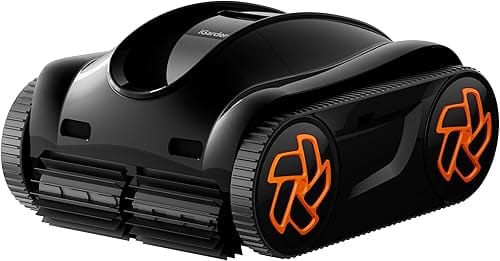
Pool Cleaner K40, 4H Runtime Cordless Robotic Pool Vacuum, Touch Screen, Smart Navigation, Cleans Floor, Walls, Waterline, Self-Parking
Assuming you leave the robot in the pool after each run, an “AI timer” has a similar three-light scheme that corresponds to an auto-cleaning cycle every 24, 48, or 72 hours. Additional controls are included for “turbo mode,” which significantly speeds up the robot, and cleaning mode (floor-only or floor/wall/waterline). Unfortunately, none of this is simple, and even after using it for a week, I still had to consult the instructions to remind me which icon was which.
It’s difficult to even turn the robot on. Initially, a knob on the robot’s underbelly functions as a kind of master power switch that needs to be turned. After that, you have to hold down the touchscreen’s power icon for three seconds for it to begin flashing. After using the other buttons to adjust your operational settings, you have to press the power button once more.
The robot will go to sleep if you wait too long on any step, and you will have to start over. I made a mistake when I tried to operate the robot for the first time, and I had to fish it out of the water twice with a hook. annoying.
The iGarden app
In some ways, the iGarden smartphone app is no better. Although it replicates most of the hardware experience, it is devoid of any added features, such as a battery meter or an operations log. I also had to double-check the control panel before each run because my choices on the app didn’t always translate to the robot.
I also ran across additional troublesome, though not as serious, problems. With several chambers and a comparatively small access hole, the iGarden’s filter basket is big yet oddly shaped, making it challenging to clean out. The item may be charged using a regular plug-in cable, and when it is in the pool, a thick rubber gasket covers the charging port. Because this gasket isn’t completely waterproof, water would go into the charging port every time I operated the robot. This meant that I had to try to drain it by setting the robot at an angle with the port facing down, which was frequently done overnight.
Conclusion
The iGarden K60 has a hefty MSRP of $1,498, but if you buy it straight from the manufacturer, it’s currently heavily discounted (with a coupon). Additionally, you should be aware that this robot is marketed as the GT60 model on Amazon. We confirmed that the G60 and the K60 are identical products by consulting with the manufacturer. Lastly, while the iGarden models K40 and K20 are nearly identical, their maximum running times are 4 and 2.5 hours, respectively.
The K60 is within striking distance of certain midrange robots when the discount is applied, which makes it a price worth taking into account. Even though it’s a great cleaner (if you give it enough time in the water), its many idiosyncrasies make it a compromise that will take careful consideration before purchasing.
